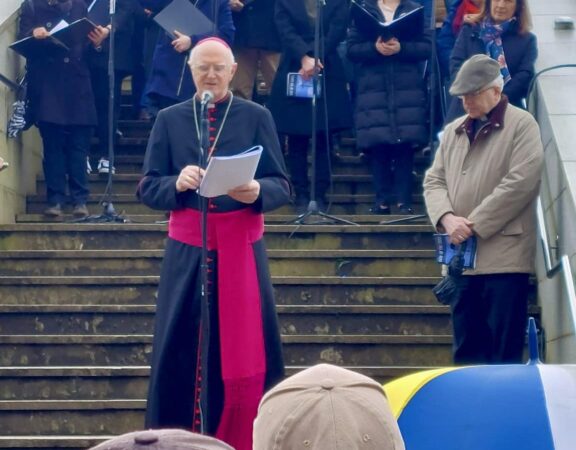Launch of 1916 Exhibition
MINISTRY, ADVOCACY AND COMPASSION
Speaking notes of Most Rev. Diarmuid Martin
Archbishop of Dublin
Saint Kevin’s Chapel, Pro-Cathedral, 23rd September 2016
I am grateful to Minister Richard Bruton for being here this evening at the launch of this exhibition Ministry, Advocacy and Compassion which looks at material from the Dublin Diocesan Archives and the Archives of some Religious Orders, especially of the Capuchin Friars, on the ministry of priests and nuns during the 1916 uprising.
The exhibition could be described as a niche exhibition: a glimpse at an aspect of 1916 which could well have been overlooked by the commemorations of the bigger picture.
It is about the ministry of priests especially here in Dublin city centre who came into direct contact with the 1916 leaders at the beginning of the Rising and at the tragic moments of their successive execution and their burial.
For me the most significant dimension of the exhibition is the fleeting glimpse we have of the state of mind of the leaders as they faced death. The notes of those who ministered capture moments that are not otherwise recorded. There is the tragic description of the personal anguish of Padraic Pearse, which Capuchin Father Columbus Murphy noted when he was authorised to visit Pearse in Arbour Hill. He found Pearse with his head buried in his hands in anguish saying “Oh Father, the loss of life, the destruction, but please God it will not be in vain.
We have in the exhibition the short note issued by the military authorities authorising that visit, granted as Father Columbus noted with no great magnanimousness and generosity with General Maxwell commenting: “Oh but we will make the beggars pay for it”
There is the striking report of the Chaplain to Arbour Hill, awoken in the middle of the night, and hearing already in the distance the shots from Kilmainham Jail and then just thirty minutes later watching the bodies arrive still warm and dripping of blood to be buried hurriedly in an open grave and covered in acid.
The story of this ministry could easily have been overlooked because these priests and religious – about whom we know little of their personal political allegiance – carried out with simplicity and without fanfare a ministry which they could never foreseen. The exhibition is also a tribute to the priests of Dublin and who minister in Dublin who serve with generosity and commitment to ministry in whatever circumstances they find themselves.
There are other exhibits which chronicle the dramatic destruction that took place, especially in the O’Connell Street area. It is interesting to note that the Pro-Cathedral is the only building in this area still standing as it was in 1916, having been saved by a change of wind from the violent fires that ranged around the neighbouring buildings.
There is an account of Padraic Pease’s happiness that James Connolly has made his peace with God and Connolly’s appreciation of the work of the priests and nuns who ministered in those dramatic days and also glimpses of Connolly devotedly receiving Holy Communion in the days before his execution, as well as details of the brutality of Connolly’s execution.
“Please God it will not be in vain” was the hope of Pearse. My hope is that this exhibition which gives us a short but unique glimpse into the hearts of those who ministered and those to whom they ministered will be an encouragement to all of us to ensure that the Ireland which we transmit to coming generations will be one of which the leaders of 1916 would be truly proud of.









